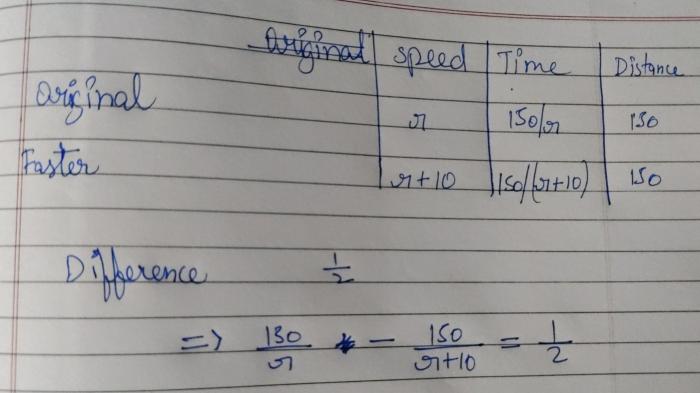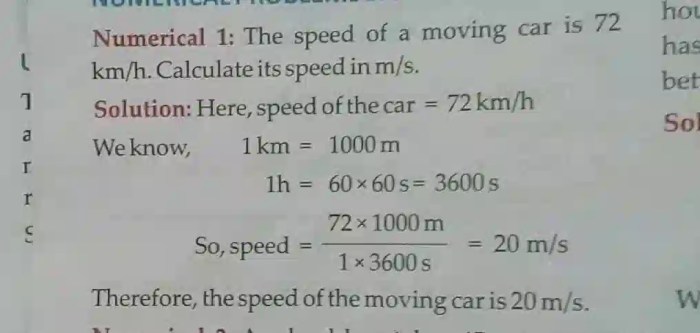A car drives 10km with a speed of 72 km/hr, embarking on a journey that unravels the intricate relationship between distance, speed, and time. This narrative delves into the heart of these concepts, exploring their interplay and practical applications with precision and clarity.
The concept of distance, measured in kilometers, represents the length of the path traversed by the car. Speed, measured in kilometers per hour, captures the rate at which the car covers this distance. Time, measured in hours, signifies the duration of the car’s journey.
Distance and Speed
Distance is the length of the path traveled, while speed is the rate at which distance is covered over time. Speed is directly proportional to distance and inversely proportional to time.
Formula for Speed
Speed = Distance ÷ Time
Units of Measurement:
- Distance: kilometers (km), meters (m), miles (mi), feet (ft)
- Speed: kilometers per hour (km/h), meters per second (m/s), miles per hour (mph), feet per second (ft/s)
Time Calculation

Time is the duration of an event. To calculate the time taken to travel a given distance at a given speed, use the formula:
Formula for Time, A car drives 10km with a speed of 72 km/hr
Time = Distance ÷ Speed
Units of Measurement:
- Time: hours (hr), minutes (min), seconds (s)
Real-World Examples

Distance, speed, and time are interconnected in everyday life. For instance:
- Driving: A car traveling 100 km at a speed of 50 km/h will take 2 hours.
- Running: A runner covering 5 km at a speed of 10 km/h will take 30 minutes.
- Flying: A plane traveling 500 km at a speed of 200 km/h will take 2.5 hours.
Applications: A Car Drives 10km With A Speed Of 72 Km/hr

Understanding distance, speed, and time has practical applications:
- Transportation: Calculating travel time and fuel consumption.
- Logistics: Optimizing delivery routes and schedules.
- Engineering: Designing vehicles and infrastructure for optimal performance.
Safety Considerations
Speed and distance are crucial factors in driving safety:
- Excessive speed increases the risk of accidents.
- Maintaining a safe distance from other vehicles allows for timely reactions.
- Adhering to speed limits ensures the safety of oneself and others.
FAQ Summary
What is the formula to calculate speed?
Speed = Distance / Time
How do I calculate the time taken to travel a certain distance?
Time = Distance / Speed
What are the implications of exceeding speed limits?
Exceeding speed limits can lead to accidents, fines, and loss of driving privileges.